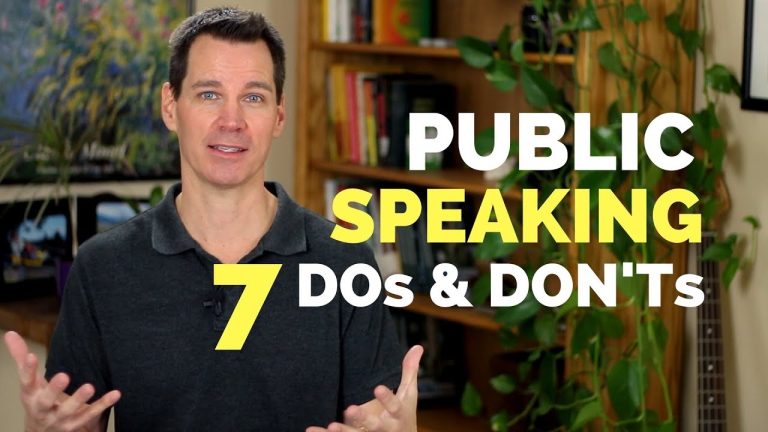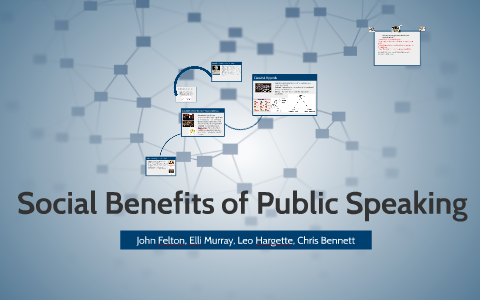What is the Two-Way Communication?
Two-way communication refers to the exchange of information between two parties in a reciprocal manner. It involves both sending and receiving messages, allowing for interactive and effective communication.
In today’s interconnected world, effective communication is essential for various aspects of life, whether it be personal relationships, business collaborations, or organizational success. Two-way communication, a dynamic process, plays a pivotal role in ensuring clarity, understanding, and mutual engagement. By enabling active participation from both sender and receiver, two-way communication fosters an environment where ideas, thoughts, and feedback can be freely exchanged.
This type of communication encourages dialogue, encourages shared decision-making, and helps build stronger connections between individuals or groups. Whether it occurs through face-to-face conversations, phone calls, emails, or social media platforms, two-way communication forms the backbone of effective human interaction, ensuring that messages are accurately conveyed, understood, and acted upon. We will delve deeper into the concept of two-way communication, exploring its significance in different contexts, its benefits, and techniques for enhancing and promoting meaningful dialogue.
What Is Two-Way Communication
Two-way communication refers to the exchange of information between two parties, involving both listening and responding. It is a dynamic process where ideas, thoughts, and opinions are shared in a back-and-forth manner. In contrast to one-way communication, where information is delivered without any feedback, two-way communication allows for interaction and engagement.
This type of communication is essential in various scenarios, such as business meetings, customer service interactions, and personal relationships. Two-way communication fosters understanding, builds trust, and promotes effective collaboration. It enables individuals to convey their perspectives, clarify doubts, and address concerns.
By actively listening and responding, people can bridge the gap between different viewpoints and find common ground. Overall, two-way communication enhances relationships, cultivates effective teamwork, and leads to better outcomes.
Elements Of Two-Way Communication
Two-way communication involves active participation from both the sender and receiver in the communication process. Each person has a role to play – the sender initiates the message, while the receiver listens and comprehends it. Feedback is a crucial component of two-way communication, as it allows both parties to validate their understanding and clarify any misunderstandings.
Additionally, active listening plays a vital role in facilitating effective communication. It entails fully concentrating on the speaker, understanding their message, and responding appropriately. Active listening helps create a supportive environment that encourages open dialogue and mutual understanding. By actively engaging in the communication process and employing effective listening skills, individuals can foster stronger connections, resolve conflicts, and promote effective problem-solving.
Strategies For Effective Two-Way Communication
Effective two-way communication is crucial for any organization. Clear and concise messaging is important to ensure understanding and avoid misunderstandings. It encourages open and honest dialogue, creating a culture of transparency. Utilizing appropriate channels for communication is key to reaching the right audience and delivering information effectively.
By avoiding overused words and phrases, we can enhance the quality of our message. Short and concise sentences help maintain reader interest and improve readability. By varying our expressions, we engage readers and keep their attention. Remember, the goal is to communicate effectively, with SEO friendly content that is unique and easy to understand.
So, let’s focus on developing strategies for effective two-way communication.
Challenges In Two-Way Communication
Effective two-way communication faces challenges like language and cultural differences, as well as power imbalances and hierarchical structures. Overcoming these barriers requires addressing the impact of diverse languages and customs on understanding. Additionally, power imbalances can be rectified by promoting transparency and inclusivity, ensuring equality among communicators.
Hierarchical structures need to be minimized, fostering an open environment that encourages dialogue between all levels of an organization. By embracing diversity and creating opportunities for everyone to have an equal voice, effective two-way communication can thrive. Such communication fosters collaboration, improves relationships, and leads to better problem-solving and decision-making.
It cultivates trust and engagement, benefiting individuals and organizations alike. Ultimately, successful two-way communication contributes to the overall growth and success of an organization.
Applications Of Two-Way Communication
Two-way communication has various applications. In the workplace, it promotes effective collaboration and feedback. It enables marketing and advertising campaigns to gather customer insights and tailor messages accordingly. In personal relationships, it fosters understanding, encourages open discussions, and resolves conflicts.
In all these contexts, two-way communication empowers both parties to express their thoughts, share information, and actively participate in the conversation. It strengthens relationships, builds trust, and enhances overall communication effectiveness. By enabling real-time interactions and feedback loops, two-way communication facilitates better decision-making and problem-solving.
Whether in professional settings or personal interactions, the ability to engage in two-way communication is essential for building connections, creating shared understanding, and achieving productive outcomes. When individuals actively listen to each other’s perspectives and engage in meaningful dialogue, the potential for growth and collaboration is limitless.
Best Practices For Two-Way Communication
Two-way communication is a vital aspect of effective communication. Encouraging a feedback culture is crucial for fostering open communication. It involves creating a safe and non-judgmental environment where individuals feel comfortable sharing their thoughts and ideas. This can be achieved by offering training and resources to enhance communication skills.
Providing employees with the necessary tools and knowledge enables them to express themselves effectively. By developing a feedback culture, organizations can improve collaboration, problem-solving, and overall productivity. Emphasizing the importance of two-way communication helps build strong relationships within teams and across the organization.
It allows for the exchange of ideas, promotes transparency, and ensures that everyone’s voice is heard. Implementing best practices for two-way communication is essential for creating a positive and engaged workforce.
Improving Two-Way Communication Skills
Two-way communication refers to the exchange of information between individuals, ensuring active engagement and understanding. Improving two-way communication skills involves various techniques, such as active listening and paying attention to non-verbal communication cues. By actively listening, individuals can better understand and empathize with the speaker’s perspective.
Additionally, being attentive to non-verbal cues, such as facial expressions and body language, helps to decipher the deeper meaning behind the words. Moreover, conflict resolution strategies are essential for effective two-way communication. By understanding how to address conflicts respectfully and find common ground, individuals can foster open and transparent communication.
In conclusion, honing two-way communication skills is critical for building strong relationships and fostering mutual understanding in both personal and professional settings.
Case Studies Of Successful Two-Way Communication
Two-way communication is a vital element for successful organizations. Case studies highlight its effectiveness. One such case is an organization that values effective communication. Another example is a leader who excels in two-way communication. These individuals prioritize listening and understanding.
They actively engage with their teams, fostering an open and inclusive environment. As a result, employees feel heard and valued, enabling them to provide valuable insights. This feedback loop strengthens trust, collaboration, and problem-solving within the organization. Successful two-way communication is not limited to verbal exchanges but includes various channels, such as surveys, suggestion boxes, and digital platforms.
These examples illustrate the importance of prioritizing effective communication in achieving organizational success.
Future Trends In Two-Way Communication
The future of two-way communication is shaped by virtual communication and the potential of AI advancements. These elements have a significant impact on the way we interact and exchange information. Virtual communication, with its digital platforms and tools, provides new opportunities for real-time dialogue and collaboration.
It allows people to connect instantly, regardless of their geographical location. Additionally, advancements in AI technology offer the potential for personalized and intelligent communication experiences. AI can analyze data, understand context, and provide valuable insights, enhancing the efficiency and effectiveness of two-way communication.
As technology continues to evolve, we can expect further innovations in this field that will revolutionize how we engage and interact with one another. The future of two-way communication is exciting, with endless possibilities for connectivity and collaboration.

Credit: www.myhubintranet.com
Frequently Asked Questions For What Is The Two-Way Communication
Which Is Two-Way Communication?
Two-way communication refers to a form of interaction where information flows in both directions. It involves the exchange of ideas, opinions, and feedback between two or more parties. This type of communication allows for active engagement and participation from all involved.
In two-way communication, each person has an equal opportunity to express themselves and listen to others. This creates a dialogue that fosters understanding, leads to better decision-making, and builds stronger relationships. Two-way communication can occur through various channels such as face-to-face conversations, phone calls, video conferences, or instant messaging platforms.
By allowing for open and honest exchanges, two-way communication promotes effective collaboration, problem-solving, and conflict resolution. It is an essential skill for individuals, teams, and organizations to ensure effective communication and mutual cooperation. Ultimately, two-way communication encourages active listening, empathy, and the exchange of diverse perspectives, resulting in fruitful and productive interactions.
What Is The Best Example Of Two-Way Communication?
The best example of two-way communication is a conversation where both parties are actively listening and responding to each other. This type of communication allows for the exchange of ideas, opinions, and information between individuals or groups. It enables effective problem-solving, mutual understanding, and building strong relationships.
By engaging in a back-and-forth dialogue, individuals can clarify their thoughts, ask questions, and seek clarification. This can take place in various settings, such as face-to-face conversations, phone calls, video conferences, or online chats. Two-way communication is essential in personal relationships, business interactions, educational settings, and any other situation where effective communication is required.
It fosters collaboration, cooperation, and effective decision-making, leading to improved understanding and outcomes for all involved parties.
What Is Two-Way Communication In Healthcare?
Two-way communication in healthcare refers to a process where information is shared and exchanged between healthcare providers and patients. It involves effective listening, clear communication, and mutual understanding. Patients have an opportunity to express their concerns, ask questions, and actively participate in their healthcare decisions.
On the other hand, healthcare providers share relevant medical information, explain treatment options, and address any doubts patients may have. This form of communication creates a collaborative and supportive relationship between healthcare professionals and patients. It allows for better understanding, increased patient satisfaction, and improved healthcare outcomes.
Two-way communication also fosters trust and builds a strong patient-provider relationship, leading to enhanced patient engagement and adherence to treatment plans. Overall, it facilitates shared decision-making and ensures that the healthcare experience is patient-centered.
What Is An Example Of Two-Way Communication In Schools?
Two-way communication in schools refers to a dialogue between two parties, such as students and teachers. An example of this is class discussions where students are encouraged to share their thoughts and ideas on a particular topic. Through these discussions, students can actively engage with the material and express their opinions while teachers provide guidance and facilitate the conversation.
Another example is parent-teacher conferences, where parents can discuss their child’s progress and ask questions about their education. This two-way communication allows parents to be involved in their child’s learning and provides an opportunity for parents and teachers to collaborate in supporting the student’s development.
By fostering two-way communication in schools, a more interactive and inclusive learning environment is created.
Conclusion
Two-way communication is a key aspect of effective communication in today’s digital world. It allows for the exchange of ideas, thoughts, and information between two parties, fostering mutual understanding and synergy. By engaging in active listening, providing prompt feedback, and encouraging open dialogue, two-way communication promotes meaningful connections and collaborations.
Furthermore, two-way communication has numerous benefits. It enhances relationships and builds trust, as individuals feel heard and valued. It enables effective problem-solving and decision-making by gathering diverse perspectives and insights. This form of communication also facilitates learning and personal growth, as individuals gain new knowledge and insights from others.
To optimize two-way communication, it is crucial to use appropriate channels and platforms, adapt communication styles to suit different audiences, and be mindful of cultural differences. By embracing the principles of two-way communication, individuals and organizations can create a harmonious and productive environment where ideas thrive, relationships flourish, and goals are achieved.
Two-way communication is a vital skill that enhances interpersonal and professional interactions. By embracing it, we can improve understanding, collaboration, and success in today’s interconnected world. Start practicing two-way communication today and enjoy the benefits it brings.





